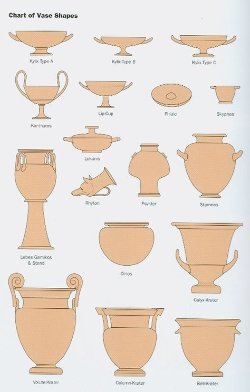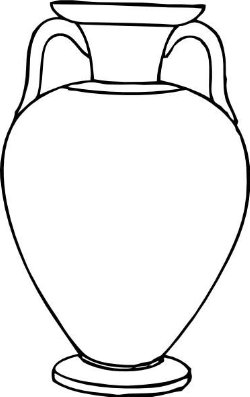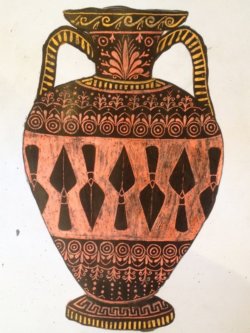Greek Vase Scratching



- What
- Greek Vase Scratching
- When
- 11/10/2018, 2:00 PM – 3:00 PM
The Greeks liked to decorate their vases with repeated patterns. Examine the use of pattern on the vase. What shapes are repeated and where are they located on the vase?
5. Ask the students to look for clues to the decoration of this vase. (This style of vase painting is called the black-figure technique. Black-figure vase painting shows figures silhouetted against a lighter-colored or unpainted background. A preliminary sketch outlined the design of the figures, which were then filled in with a layer of liquid clay or slip. Before firing, incisions were made through the black gloss with a sharp pointed tool to delineate details of the figures in the lighter color of the underlying clay. In the firing process the clay slip turns black. After firing, white or other colors were sometimes applied on top of the black to add details.)
Responding to, Analyzing, and Making Judgments About Works in the Visual Arts
Derive Meaning
4.1 Compare ideas expressed through their own works of art with ideas expressed in the work of others.
Make Informed Judgments
4.3 Use the vocabulary of art to talk about what they wanted to do in their own works of art and how they succeeded.
4.4 Use appropriate vocabulary of art to describe the successful use of an element of art in a work of art.
Grade 6
Historical and Cultural Context
Understanding the Historical Contributions and Cultural Dimensions of the Visual Arts
Role and Development of the Visual Arts
1 Compare and describe various works of art that have a similar theme and were created at different time periods.
2 Identify and describe objects of art from different parts of the world observed in visits to a museum or gallery (e.g., puppets, masks, containers).
Procedure 1Scratchboard can be purchased and used for this project, but it can also be created. First, take a heavy sheet of paper. Draw and color Using crayon (or if you want to be more specific, use terracotta, or other shades of red) and cover the entire sheet of paper with that crayon. The color has to be applied heavily in order for the final product to work, so emphasize that students must completely cover their sheet before moving on to the next step. Then, take a large brush and paint the entire sheet in black acrylic, covering all of the crayon.
5Once everyone has finished, have each student talk about his or her illustration in a class critique. Each student should be able to talk about why he or she chose to portray his or her particular scene from the myth. Students will also discuss what they intended to show in their artwork. Discuss with students how their vases are similar to or different from the vase by the Eagle Painter. |
| ||||||
Assessment | |||||||
Students will be assessed on their completion of the assignment and their ability to incorporate line and pattern into their designs. They will also be graded on their ability to use new art vocabulary to talk about what they wanted to do in their art. Craftsmanship | |||||||
Extensions | |||||||
Many vases from ancient Greece show scenes of daily life. Examine vases from the collection that show everyday life and have students create their own vase scenes that show scenes from their own lives. | |||||||

